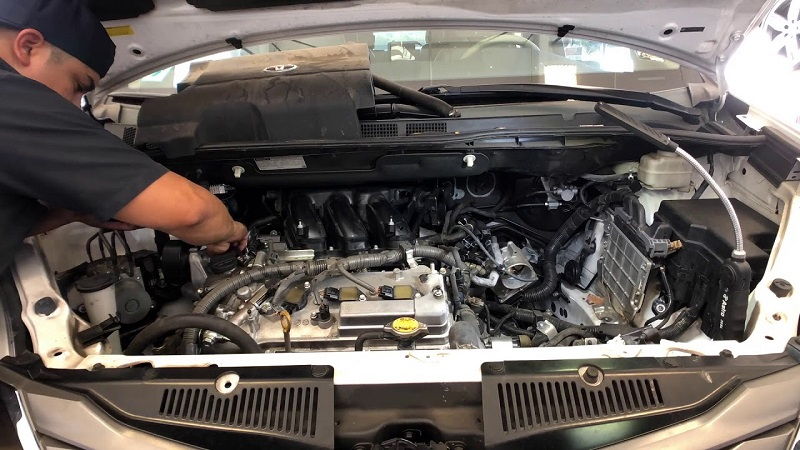This post contains affiliate links. This means I will make a commission at no extra cost to you should you click through and make a purchase [ “As an Amazon Associate, I earn from qualifying purchases.” ]. Read the full disclosure here.
Toyota Sienna Spark Plug Replacement GuideMechanic.Com When it comes to maintaining your Toyota Sienna, one crucial aspect that should never be overlooked is spark plug replacement.
Spark plugs play a vital role in the ignition process of your vehicle, and a faulty or worn-out plug can lead to a host of issues, including decreased fuel efficiency, misfires, and even engine damage.
In this comprehensive guide, we will walk you through the process of replacing the spark plugs in your Toyota Sienna, ensuring that your vehicle continues to run smoothly and efficiently.
Understanding the Importance of Spark Plug Replacement
How Do Spark Plugs Work?
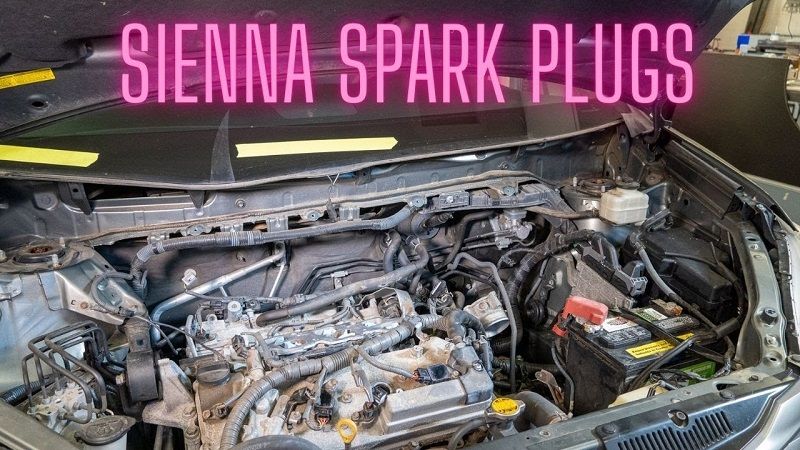
Spark plugs are small devices that generate the electrical spark necessary to ignite the air and fuel mixture in the combustion chamber of your Toyota Sienna’s engine.
This spark ignites the fuel, allowing your engine to run. Over time, however, spark plugs can become dirty, worn out, or damaged, resulting in a weaker spark or even no spark at all. Regular replacement of spark plugs is essential to maintain optimal engine performance.
Signs that Indicate the Need for Replacement
There are several signs that indicate it’s time to replace your Toyota Sienna’s spark plugs. One common sign is rough idling, where your engine may feel shaky or vibrate excessively when at a stop.
See Also: 2003 Honda Accord Spark Plugs
Difficulty starting the engine, especially on cold mornings, can also be a sign of worn-out spark plugs. Additionally, if you notice a decrease in fuel economy or a misfiring engine, it’s likely time to replace your spark plugs.
Gathering the Necessary Tools and Materials
Tools Required for the Job
Before you start replacing the spark plugs in your Toyota Sienna, it’s essential to gather the necessary tools. You will need a ratchet wrench with an extension and a spark plug socket that fits your specific spark plugs.
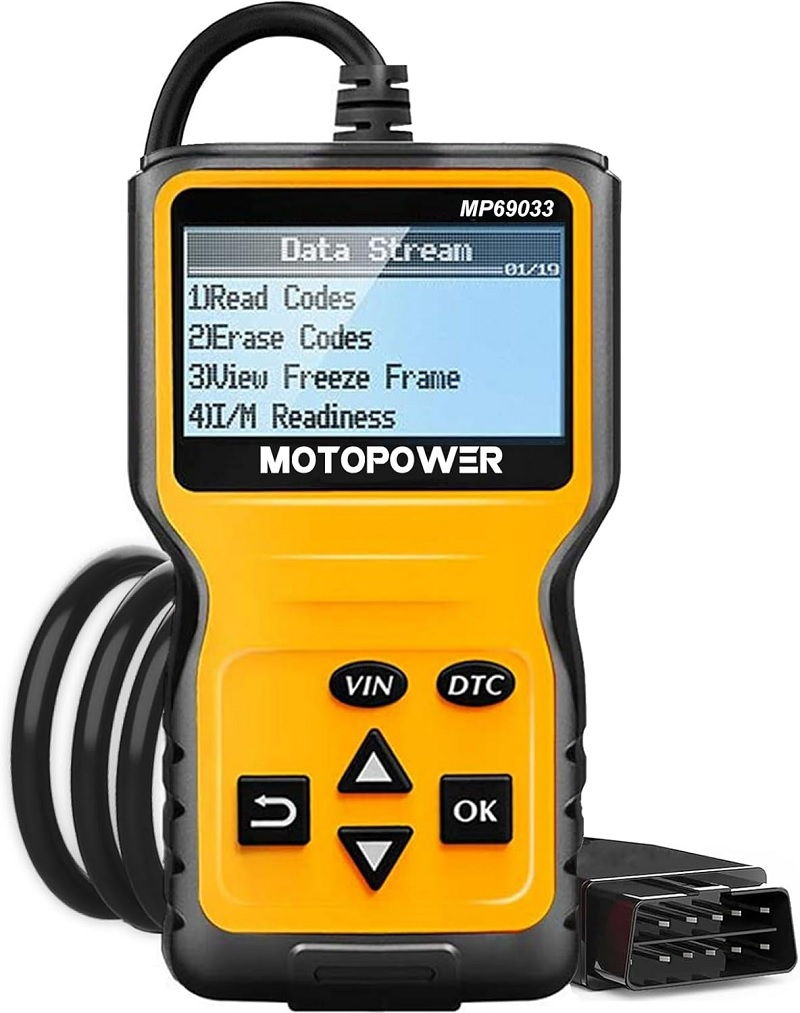
A torque wrench is also necessary to tighten the new spark plugs to the manufacturer’s specifications. Additionally, it’s helpful to have a spark plug gap tool, a wire brush, and dielectric grease for a thorough and successful replacement.
Materials Required for the Job
Alongside the tools, you will need the appropriate spark plugs for your Toyota Sienna. It’s crucial to use the recommended spark plugs to ensure compatibility and optimal performance.
Consult your vehicle’s owner’s manual or speak with a trusted mechanic to determine the correct spark plug type and heat range for your specific Sienna model. Having a tube of anti-seize compound and dielectric grease on hand is also advisable for a smooth replacement process.
Removing the Old Spark Plugs
Preparing the Engine for Spark Plug Removal
Before removing the old spark plugs, it’s important to ensure the engine is cool. Working on a cool engine reduces the risk of burns and allows for a more comfortable and efficient replacement process.
Open the hood of your Toyota Sienna and locate the spark plug wires or ignition coil-on-plug connectors, depending on your specific model. Carefully disconnect these wires or connectors to access the spark plugs.
Removing the Spark Plugs
Once you have access to the spark plugs, use the ratchet wrench with the appropriate spark plug socket to loosen and remove the old spark plugs. Rotate the wrench counterclockwise to unscrew the plugs from the cylinder head.
See Also: Spark Plug Tube Seal Replacement
Take care not to force or overtighten the wrench, as this can damage the plugs or the engine. Gently pull the spark plug wire or ignition coil-on-plug connector off the spark plug, ensuring not to damage the wire or connector in the process.
Inspecting and Cleaning the Spark Plug Wells
Inspecting the Spark Plug Wells
With the old spark plugs removed, take a moment to inspect the spark plug wells for any signs of damage or debris. Look for oil or coolant leaks, which could indicate a more significant issue with your engine.
Ensure that the wells are clean and free from any dirt or debris that could interfere with the installation of the new spark plugs.
Cleaning the Spark Plug Wells
If you notice any dirt or debris in the spark plug wells, it’s important to clean them before installing the new spark plugs. Use a clean rag or compressed air to remove any loose dirt or debris.
Be cautious not to push dirt or debris further into the wells.If necessary, use a small brush or a cotton swab dipped in a mild solvent to clean the wells thoroughly. Ensure that the wells are completely dry before proceeding with the installation.
Installing the New Spark Plugs
Gapping the New Spark Plugs
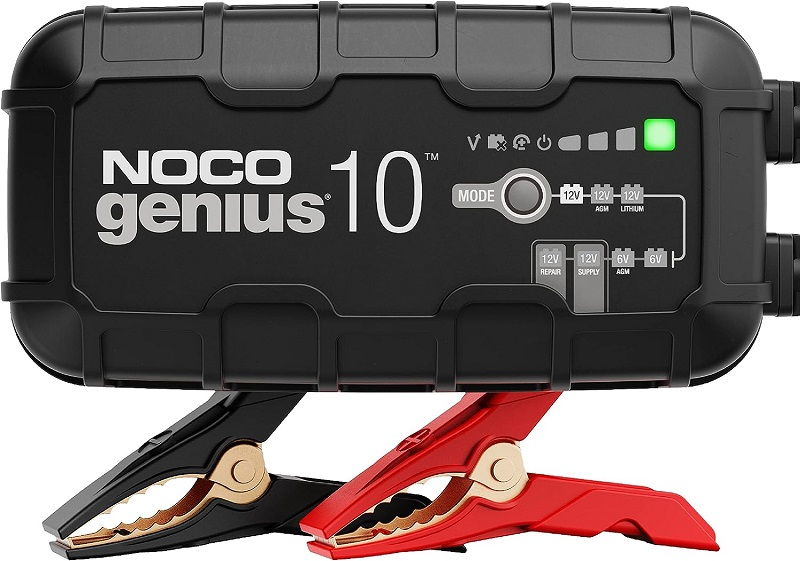
Before installing the new spark plugs, it’s crucial to check and adjust the gap, if required. The gap refers to the distance between the center and ground electrode of the spark plug.
Refer to your vehicle’s owner’s manual or the spark plug manufacturer’s instructions to determine the correct gap for your Toyota Sienna’s spark plugs. Use a spark plug gap tool to measure the gap and adjust it as necessary by carefully bending the ground electrode.
Applying Anti-Seize Compound
To prevent the spark plugs from seizing or sticking in the cylinder head, it’s recommended to apply a thin coat of anti-seize compound to the threads of the new spark plugs.
This compound acts as a lubricant, making future spark plug removal easier. Take care not to apply too much anti-seize compound, as excess compound can interfere with the spark plug’s electrical conductivity.
Installing the New Spark Plugs
With the new spark plugs properly gapped and coated with anti-seize compound, carefully thread them into the spark plug wells by hand. Ensure that the plugs are threaded straight and not cross-threaded to avoid damaging the threads or cylinder head.
Once the plugs are hand-tight, use the spark plug socket and ratchet wrench to tighten them further. Refer to the spark plug manufacturer’s instructions or your vehicle’s owner’s manual for the recommended torque specifications. Use a torque wrench to achieve the proper torque, ensuring a secure and leak-free seal.
Reassembling and Testing
Reconnecting the Spark Plug Wires or Ignition Coils
With the new spark plugs installed and properly tightened, it’s time to reconnect the spark plug wires or ignition coil-on-plug connectors. Ensure that each wire or connector is firmly seated onto the corresponding spark plug.
Take care not to mix up the wires or connectors, as this can lead to misfires or engine performance issues. Double-check the connections for a secure fit.
Reassembling Other Engine Components
Now that the spark plugs are in place and the spark plug wires or ignition coil-on-plug connectors are securely connected, it’s time to reassemble any other engine components that were removed or relocated during the replacement process.
This may include air intake tubes, engine covers, or any other parts that were temporarily moved to access the spark plugs. Ensure that all components are properly aligned and secured.
Testing the Newly Installed Spark Plugs
After completing the spark plug replacement, it’s crucial to test the newly installed plugs to ensure they are functioning correctly.
See Also: Honda Odyssey Spark Plug Replacement
Start your Toyota Sienna’s engine and listen for any abnormal noises or vibrations. Observe the engine’s idle to ensure it is smooth and steady.
Take the vehicle for a short test drive, paying attention to acceleration and overall performance. If you notice any issues or abnormalities, it’s advisable to consult a trusted mechanic to diagnose and address the problem.
Maintenance Tips for Prolonged Spark Plug Life
Regular Inspections
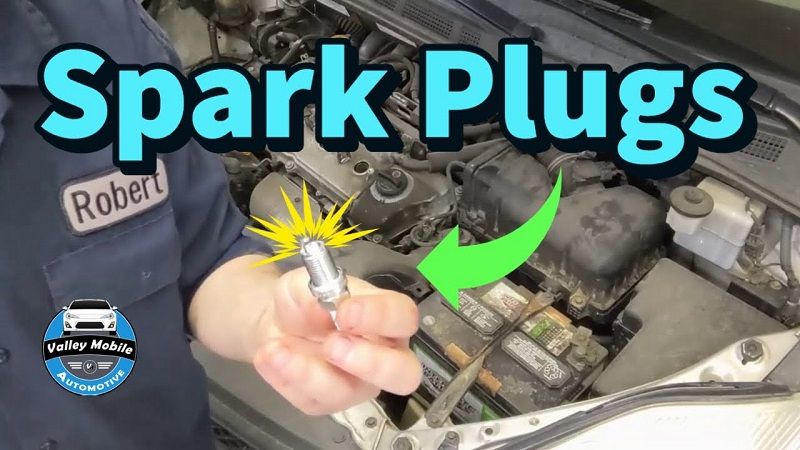
To prolong the life of your spark plugs, it’s important to perform regular inspections. Check your spark plugs periodically for signs of wear, damage, or fouling.
If you notice any issues, such as worn electrodes or heavy carbon buildup, it may be necessary to replace the spark plugs sooner than expected. Regular inspections can help identify and address potential problems before they cause significant engine damage.
Cleaning Techniques
In addition to inspections, cleaning your spark plugs can help maintain their performance and longevity. If you notice light carbon deposits on the spark plugs, you can use a wire brush or a specialized spark plug cleaning tool to gently remove the deposits.
Avoid using excessive force or abrasive materials that could damage the electrodes. Be sure to consult the spark plug manufacturer’s instructions for specific cleaning recommendations.
Preventive Measures
Preventive measures can also contribute to prolonged spark plug life. Avoid driving through deep puddles or submerged areas, as water can cause electrical shorts in the spark plugs.
Additionally, be mindful of fuel quality and choose reputable gas stations that provide clean and properly filtered fuel. Poor fuel quality can lead to fouled spark plugs and decreased engine performance.
Frequently Asked Questions
1. How often should I replace the spark plugs in my Toyota Sienna?
The recommended interval for spark plug replacement varies depending on the specific model and engine of your Toyota Sienna. Generally, it is advisable to replace spark plugs every 30,000 to 40,000 miles.
However, it’s crucial to consult your vehicle’s owner’s manual or speak with a trusted mechanic to determine the recommended interval for your specific Sienna model. Factors such as driving conditions, fuel quality, and engine performance can also affect the lifespan of your spark plugs.
2. Can I replace the spark plugs myself, or should I consult a professional?
While spark plug replacement is a task that many DIY enthusiasts can tackle, it’s important to assess your comfort level and mechanical skills before proceeding.
If you have experience working on cars and feel confident in your abilities, you can certainly replace the spark plugs yourself by following this comprehensive guide.
However, if you’re unsure or uncomfortable with the process, it’s always best to consult a professional mechanic who can ensure the job is done correctly and prevent any potential damage to your vehicle.
3. What are the benefits of regular spark plug replacement?
Regular spark plug replacement offers several benefits for your Toyota Sienna. Firstly, it helps maintain optimal engine performance by ensuring a strong and consistent spark for ignition.
This leads to smoother idling, improved acceleration, and overall better fuel efficiency. Additionally, replacing worn-out spark plugs can prevent misfires, engine hesitation, and other performance issues.
See Also: Briggs and Stratton Spark Plug Replacement
By taking proactive measures to replace your spark plugs, you can extend the life of your engine and prevent costly repairs down the line.
Expert Tips and Recommendations
1. Use OEM or high-quality aftermarket spark plugs
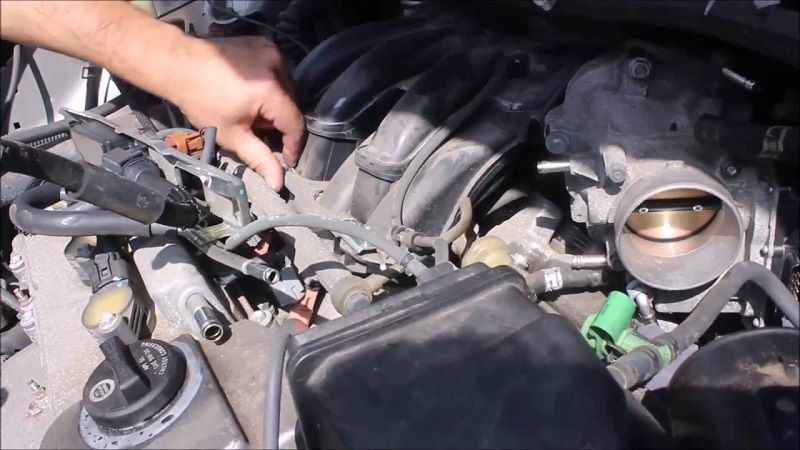
When selecting spark plugs for your Toyota Sienna, it’s advisable to choose OEM (Original Equipment Manufacturer) spark plugs or high-quality aftermarket options. OEM spark plugs are specifically designed for your vehicle’s engine and provide optimal performance and longevity. If you opt for aftermarket spark plugs, ensure that they meet or exceed the specifications recommended by the vehicle manufacturer.
2. Follow the recommended torque specifications
Proper torque is crucial when installing spark plugs to ensure a secure and leak-free seal. Always refer to the spark plug manufacturer’s instructions or your vehicle’s owner’s manual for the recommended torque specifications. Using a torque wrench will help you achieve the correct torque and prevent overtightening or undertightening of the spark plugs.
3. Replace the spark plug wires or ignition coils if necessary
During the spark plug replacement process, it’s a good idea to inspect the spark plug wires or ignition coils for any signs of wear or damage. If you notice cracked or frayed wires, or if the ignition coils are worn out, it’s recommended to replace them along with the spark plugs. This ensures a complete ignition system overhaul and can prevent future issues related to faulty ignition components.
Final Thoughts
Regular spark plug replacement is an essential aspect of maintaining your Toyota Sienna’s performance and ensuring a smooth and efficient driving experience.
By following the detailed steps outlined in this comprehensive guide, you can confidently replace the spark plugs yourself and reap the benefits of improved engine performance and fuel efficiency.
Remember to consult your vehicle’s owner’s manual or seek professional advice if you have any doubts or concerns.
See Also: 2016 Honda Pilot Spark Plug Replacement
With proper maintenance and care, your Toyota Sienna’s spark plugs will continue to ignite the way to many more miles of enjoyable driving.
Related video of Toyota Sienna Spark Plug Replacement: A Comprehensive Guide
- Craigslist Cheap Used Trucks Under $3000 - July 14, 2025
- Craigslist Used Diesel Trucks for Sale Near Me - July 14, 2025
- Craigslist 4×4 Trucks Under $5000 - July 14, 2025

